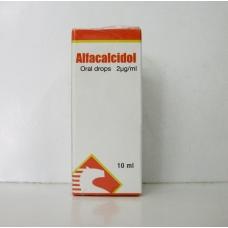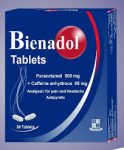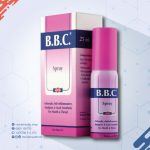
Alfacalcidol drops
Composition:
Each 1 ml of drops contains :
Alfacalcidol 2 mcg
Inactive: Inactive. all-rac-Alpha- Tocopherol (Vitamin E Oily),
Polyoxyl 40 hydrogenated castor oil(Cremophore RH40), Citric acid
monohydrate, Methyl Paraben Sodium, Alcohol 96%, Glycerin, Sorbitol 70% solution non-crystalline, Trisodium Citrate, Distilled water
Mechanism of Action:
Alfacalcidol (1alpha-OHD3) is rapidly converted in the liver to 1, 25-dihydroxyvitamin D3 (1, 25-(OHj,D3), the metabolite of vitamin D which acts as a regulator of calcium and phosphate homeostasis.
Impaired endogenous production of 1,25-dihydroxyvitamin D3 by the kidneys appears to contribute to the distur- bances in mineral metabolism found in several disorders, including renal bone disease, hypoparathyroidism, and vitamin D-dependent rickets. These disorders, which require high doses of vitamin 0 for their correction, will respond to small doses of alfacalcidol. As compared to vitamin D, the main advantage of alfacalcidol is more rapid onset of response. This allows a more accurate titration of dosage and decreases the risk of prolonged hypercalcaemia.
Parmacokinetics:
Serum levels of 1,25-(OH)2 D3 peak approximately 12 hours after a Single dose of alfacalcidol and remain at measurable levels for at least 48 hours. The effect of 1 mcg of alfacalcidol on calcium absorption has been observed within 6 hours and was maximal at 24 hours. The biological half-life is approximately 35 hours
Indication and usage:
Diseases caused by disturbances in the calcium metabolism in consequence of reduced endogenous production of 1 ,25-dihydroxyvitamin D3 as:
– Renal osteodystrophy.
– Postoperative or idiopathic hypoparathyroidism.
– Pseudohypoparathyrodism.
– As an adjunct to the management of tertiary hyperparathyroidism.
– Vitamin D-resistant rickets or osteomalacia.
– Vitamin D-dependent rickets, neonatal hypocalcaemia or rickets.
– Malabsorption of calcium.
– Malabsorptive and nutritional rickets and osteomalacia.
– Postmenopausal osteoporosis
Dosage & administration:
Initial dose:
Adulls and children above 20 kg body weight: 1 mcg daily Children under 20 kg body weight: 0.05 mcg/kg/day
Neonates: 0.1 mcg/kg/day
Dosage in the elderly: 0.5 mcg/day 11 is important to adjust dosage thereafter according to the biochemical responses and to avoid hypercalcaemia. Indices of response include levels of serum calcium, alkaline phosphatase, parathyroid hormone, urinary calcium excretion as well as radiographic and histological investigations. Patients with marked bone disease (other than those with renal failure) may tolerate higher doses without developing hypercalcaemia. However, failure of the serum calcium to rise promptly in osteomalacia patients does not necessarily mean that a higher dose is required since calcium from increased intestinal calcium absorption may be incorporated into demineralized bone.
The dose requirements generally decrease in patients with bone disease when there is biochemical or radio- graphic evidence of bone healing and in hypoparathyroid patients after normal serum calcium levels have been attained. Maintenance doses are generally in the range of 0.25 to 1 mcg daily. tn patients with osteoporosis receiving alfacalcidol, the recommended dosage for alfacalcidol for postmenopausal osteoporosis patients is 1 mcg daily.
The dose should be titrated according to the individual needs.
Calcium supplementation should not be required if the normal dietary intake is in region of 1500 mg per day. However, many postmenopausal patients have dietary intake as little as 600 mg per day and calcium supplemen- tation of 0.5 – 1 g per day could be required
Contraindication:
Hypercalcaemia & metastatic calcification
Side effects:
The most frequently reported side effect is hypercalcemia. Symptoms which may appear with hypercalcemia are anorexia, nausea and vomiting, diarrhea, weight loss, polyuria, sweating, headache, thirst, vertigo and raised concentration of calcium and phosphate in plasma & urine.
Pregnancy & lactations:
Alfacatidol should be used in pregnancy and lactation only if considered necessary by a physician.
Overdose toxicity:
Hypercalcaemia is treated by stopping treatment with alfacalcidol. Severe hypercalcaemia may require additional treatment with “loop” diuretic and intravenous fluids or with corticosteroids.
Drug interactions:
Barbiturates and other anticonvulsants may reduce the effectiveness of alfacalcidol so that the dose needs to be It increased.
Diuretics: Increase risk of hypercalcemia when vitamin 0
is given with thiazides and related drugs.
Warnings:
Throughout the treatment with alfacalcidol, regular serum calcium determinations are essential. Indeed, alfacalcidol should be used only when adequate facilities are available for monitoring of serum calcium and other appropriate bio-chemical parameters on a regular basis.If hypercalcaemia occurs, alfacalcidol medication should
be stopped immediately until serum calcium levels retum to normal (in about one week) and then re-started at half the previous dose. The risk of hypercalcaemia depends on such factors as the degree of any mineralization defect, renal function, and the dose of alfacalcidol. Hyper-calcaemia will occur when there is biochemical evidence of bone healing (e.g. a retum towards normal in the level
plasma alkaline phosphatase) and the dose of alpha- OHD3 is not reduced appropriately. Prolonged hypercalcaemia should be avoided, particularly in chronic renal failure.
Frequency of monitoring: Plasma calcium levels should be measured at weekly to monthly intervals depending on the progress of the patient. Frequent estimations are necessary in the early stages of treatment (particularly when the plasma calcium is already relatively high) and later when there is evidence of bone healing.
Plasma calcium levels should be estimated regularly during the initial treatment of disorders without significant bone involvement, e.g. hypoparathyroidism. In patients with renal bone disease alfacalcidol should be given in combination with a phosphate binding agent to prevent hyperphosphataemia, which is known to increase the risk of metastatic calcification.
Package & storage:
Carton box containing bottle of 10 ml or 20 rnl with fitted dropper + insert
Keep refrigerated at 2-a’C, Should be protected from light.
keep out of reach of children.
Produced by:
AI Esraa pharmaceutical optima.


